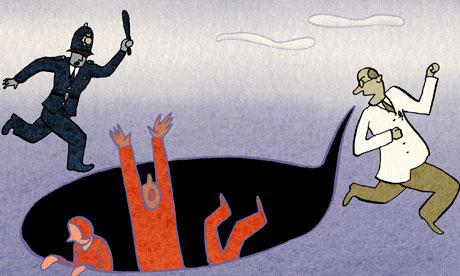Posted by Michael Jeh 1 day, 5 hours ago in Michael Jeh
John Inverarity has bowled me a doosra today with his comments about the doosra and integrity. I’m genuinely not sure which way to play this one.
That he is a gentleman and a scholar there can be no doubt. His reputation as man of decency and integrity allows him the privilege of making a comment such as this with some immunity from anyone looking to take cheap shots at him. From that perspective, reading his words carefully, I can draw no hint of mischief or hypocrisy in his brave statement. Perhaps a long bow could be drawn to infer that he is pointing fingers at some bowlers but I genuinely think that to do so would be to do the gentleman an injustice. Clearly he believes that the doosra has the potential to corrupt bowling actions and he would prefer to see the Australian bowling contingent shy away from that technique. Fair enough too if that is his genuine belief.
On the other hand, I also believe that it may be a bit naïve on the part of Australian cricket, if Inverarity is speaking on behalf of the institution rather than as an individual, to encourage a policy that is clearly going to disadvantage Australia to this extent. Put simply, the doosra is arguably the most potent bowling weapon in modern cricket. Especially in limited overs cricket, it is probably the single most influential factor in giving bowling teams a sniff of hope. The fast bowlers have proved woefully inadequate in coming up with anything new to stem the flow of boundaries. In fact, their skill level has actually dropped some considerable level, evidenced by the steady diet of full tosses that are served up at least once an over when under pressure. So the doosra and the variations that followed (carrom ball) can lay claim to being the most influential game-changer. When a bowler with a good doosra comes on to bowl, I immediately sit up and take notice because there is always the chance that a game can be turned on its head. Since Shane Warne led the new spin revolution, nothing has excited me more in the bowling stakes than the perfection of the various types of doosra.
That is why I am slightly flummoxed by Inverarity’s stance on it. Whilst not necessarily agreeing with his inference that it may lead to illegal actions, I respect his integrity enough to accept his point in the spirit it was intended. However, to encourage Australian spinners to not learn the art form is possibly putting principle before pragmatism. That in itself is admirable if it were applied universally but no country, least of all Australia, has ever applied this morality on a ‘whole of cricket’ basis so what makes the doosra so special? Is Inverarity suggesting that Australian cricket should now make decisions on the basis of integrity or is the doosra singled out as the one issue where we apply the Integrity Test? If so, is it any coincidence that we don’t really have anyone who can bowl the doosra with any great proficiency and will that change on the day we discover our own Doosra Doctor?
All countries have their own inconsistencies to be ashamed of so I’m not suggesting that Australia is alone in this regard. Far from it. Living in Australia, I just get to see a lot more of the local cricketing news so I’m better qualified to make comment on Australian examples. A few examples spring to mind….let’s think back to the times when we prepared turning tracks in the 1980s to beat the West Indies. A fair enough tactic too so long as there’s no complaints if other teams prepare pitches to suit their strengths. Similarly, I recall a period during the late 1990s when Australian teams insisted on having their fielder’s word accepted when a low catch had been taken. That theory worked OK until Andy Bichel claimed a caught and bowled off Michael Vaughan in the 2002/03 Ashes series when replays showed it had clearly bounced in front of him. I know Bich quite well and he is as honest as they come so it was genuinely a case of him thinking it had carried when in fact it hadn’t. Around that same period, Justin Langer refused to walk when caught by Brian Lara at slip, despite the Australian mantra that a fielder’s word was his bond. They come no more honourable than Lara in this regard so what happened to the principle? Like all matters of convenience, it is admirable but rarely works when it becomes an inconvenient truth.
And that is the source of my confusion with linking the doosra to the question of integrity. I’m not convinced that the integrity issue will stand the test of time if Australia accidentally discovers a home-grown exponent of this delivery. Likewise the issue of the switch-hit. Now that Dave Warner plays it as well as anyone, are we opposed to this too on integrity grounds? If Warner hadn’t mastered the shot, would that too be something that we would not encourage because it perhaps bent the spirit of cricket?
Only time will tell whether Inverarity’s wisdom and guidance will be mirrored by those in the organisation with perhaps less integrity and more pragmatism in their veins. I suspect it will take more than one decent man to stop an irresistible force. His motives may be pure indeed but I suspect that this is one issue that will turn the other way!
This week, Daily Telegraph readers have been astonished by revelations about the incompetent regulation of
implantable medical devices. This paper has clearly demonstrated
that patients are put at risk, because of flawed and absent legislation. But
many of these issues apply even more widely, to the regulation of all medicines,
and at the core is a scandal that has been shamefully
ignored by politicians.
The story is simple: drug companies can hide information about their drugs
from doctors and patients, perfectly legally, with the help of regulators. While
industry and politicians deny the existence of this problem, it is widely
recognised within medical academia, and meticulously well-documented. The
current best estimate is that half of all drug trials never get
published.
The Government has spent an estimated £500 million stockpiling Tamiflu to
help prevent pneumonia and death in case of an avian flu epidemic. But the
manufacturer, Roche, continues to
withhold vitally important information on trials of this drug from
the universally respected Cochrane Library, which produces gold-standard
summaries on medicines for doctors and patients. Nobody in the Department of Health or any regulator has
raised a whisper about this, though Roche says it has made “full clinical study
data available to health authorities around the world”.
In fact, while regulators should be helping to inform doctors, and protect
patients, in reality they have conspired with companies to withhold information
about trials. The European Medicines Agency, which now approves drugs for use in
Britain, spent more than three years refusing to hand over information to
Cochrane on Orlistat and Rimonabant, two widely used weight loss drugs. The
agency’s excuses were so poor that the European Ombudsman made a finding of
maladministration.
Even Nice, the National Institute for Health and Clinical Excellence, plays
along with this game. Sometimes chunks of its summary documents on the benefits
and risks of drugs are redacted, because data has only been shared by companies
under unethical “confidentiality agreements”. The numbers are blacked out in the
tables, to prevent doctors seeing the benefits from a drug in each trial; and
even the names of the trials are blacked out, as if they were code names for
Russian agents during the Cold War.
This is a perverse and bizarre situation to have arisen in medicine, where
decisions are supposed to be based on evidence, and where lack of transparency
can cost lives. Our weak regulations have been
ignored, and if we don’t act quickly, the situation will soon get
much worse. The European Medicines Agency’s sudden pledges of a new era of
transparency are no use: it has a track record of breaking such promises. We
need proper legislation, but the new Clinical Trials Directive, currently
passing through the European Parliament, does nothing to improve things.
Are you glazing over at the mention of European directives? This is where it all went wrong. Sunlight is the best disinfectant, but these issues have been protected from public scrutiny by a wall of red tape, while the people we trust to manage these complex problems have failed us. Regulators have lacked ambition. Politicians have ignored the issue. Journalists have been scared off by lobbyists. Worst of all, the doctors in medical membership bodies, the Royal Colleges and the Societies, even the patient groups – many of them funded by industry – have let us all down.
This must change. We need muscular legislation to ensure that all information about all trials on all currently used drugs is made available to doctors. We need the members of patient groups and medical bodies to force their leaders to act. And we need EU medicines regulators to be held to public account, for the harm they have inflicted on us.
Ben Goldacre is a doctor and author of 'Bad Pharma’ (4th Estate 2012)
Are you glazing over at the mention of European directives? This is where it all went wrong. Sunlight is the best disinfectant, but these issues have been protected from public scrutiny by a wall of red tape, while the people we trust to manage these complex problems have failed us. Regulators have lacked ambition. Politicians have ignored the issue. Journalists have been scared off by lobbyists. Worst of all, the doctors in medical membership bodies, the Royal Colleges and the Societies, even the patient groups – many of them funded by industry – have let us all down.
This must change. We need muscular legislation to ensure that all information about all trials on all currently used drugs is made available to doctors. We need the members of patient groups and medical bodies to force their leaders to act. And we need EU medicines regulators to be held to public account, for the harm they have inflicted on us.
Ben Goldacre is a doctor and author of 'Bad Pharma’ (4th Estate 2012)



 34 Comments
34 Comments